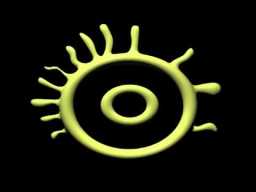(God) A – NUN – NA – KE4 – NE
A lot of of clay documents refer to these ancient gods, but two are especially extense, the Enuma Elish and Atrahasis, compositions reworked for political and religious reasons throughout the centuries while they passed from hands of the Sumerians to the Akkadians , Babylonians, Assyrians and Persians, texts which it has to say they had no the doctrinal character of other holy books like the Bible or the Koran, it was just a kind of mystical epic where the knights were celestial gods and the dragons and ladies were chimeras and simple human women, or vice versa because everything fits up in a millennial civilization as the Sumerian or rather Mesopotamian.
Admittedly, Zechariah Sitchin, despite the confusion and diatribes that have been generated from his books, has discovered a forgotten world to more people than the real specialists, not wanting to detract from what have done the great eminences as S. N. Kramer work or J. Bottero, popularizers and at the same time true academic experts, to whom I owe many hours of fascinating, and in my opinion, very nice reading.
The Sumerian language is partially known quite well and it is easier to translate on the clay tablets after two thousand years before the current era, since it is then when appears the use of grammatical particles as a logical evolution and necessary, Sumerian writing was more or less like the language of the Indians of the western movies that speak with infinitives, succinct and with much room for speculation. Seen like this way, Sitchin’s interpretations sometimes seem no more absurd than those of professional linguists, while other times it seems evident that perhaps he let him carried away by imagination, as in the case of the Sumerian word MU which it translates to Akkadian SHUMU and it is in the Hebrew, which is a relative of Akkadian, as SHEM, a term which also designates the son of Noah, the word “name” and “monument” as well. Although sometimes the cuneiform sign is really a picture of what it wants to express, Sitchin lays aside the usual phonetic value and reinterprets its meaning of the cuneiform glyph from its shape, on the other hand extremely similar to what in the popular imagery of nowdays is a rocket or spacecraft, profoundly altering the meaning of some passages Sumerians and even the Bible, so according to Sitchin we have Gilgamesh , in its famous epic, saying something like that (do not be evil-minded, I do not I think this guy had erection problems):
“May I raise my rocket,
In the place where the rockets are raised …..! ”
, When specialists read:
“May I raise my name,
In the place where the names are raised ….! ”
whose interpreting is more evident if we give to the word “name” the meaning “reputation.” Sitchin is defended on the grounds that SHEM often refers to a bethilo or obelisk, a memorial, which is ultimately a representation in stone of a rocket. Specialists are not willing to accept this under any concept, but they do not know for a fact, what meaning could have these bethilos or obelisks for the people of those times, some of these specialists speculate (yes, also specialists speculate, especially when the other version seems too bizarre or extravagant) that an obelisk is a stylized shape of pyramid, explanation which in my opinion is not particularly enlightening. Moreover, the idea of ”celestial chariots” is not a strange thing at all, in ancient writings as the Mahabharata, the Bible or the Koran, as can be seen through the vision of Ezekiel (Ezekiel 1) or that of Enoch (Genesis 5:24), who is said explicitly that he did not die but was taken up into heaven like Eliáh (Kings 2:11).
In my post of April, I speculated (I speculate, you speculate …. all of us speculate) with the meaning of the name of the city of Eridu, whose sign is the same as “prince”, ie NUN, then * A-NUN-NA-KE4-NE could also mean “of the lineage of Eridu”, the first city founded by the Sumerians.



